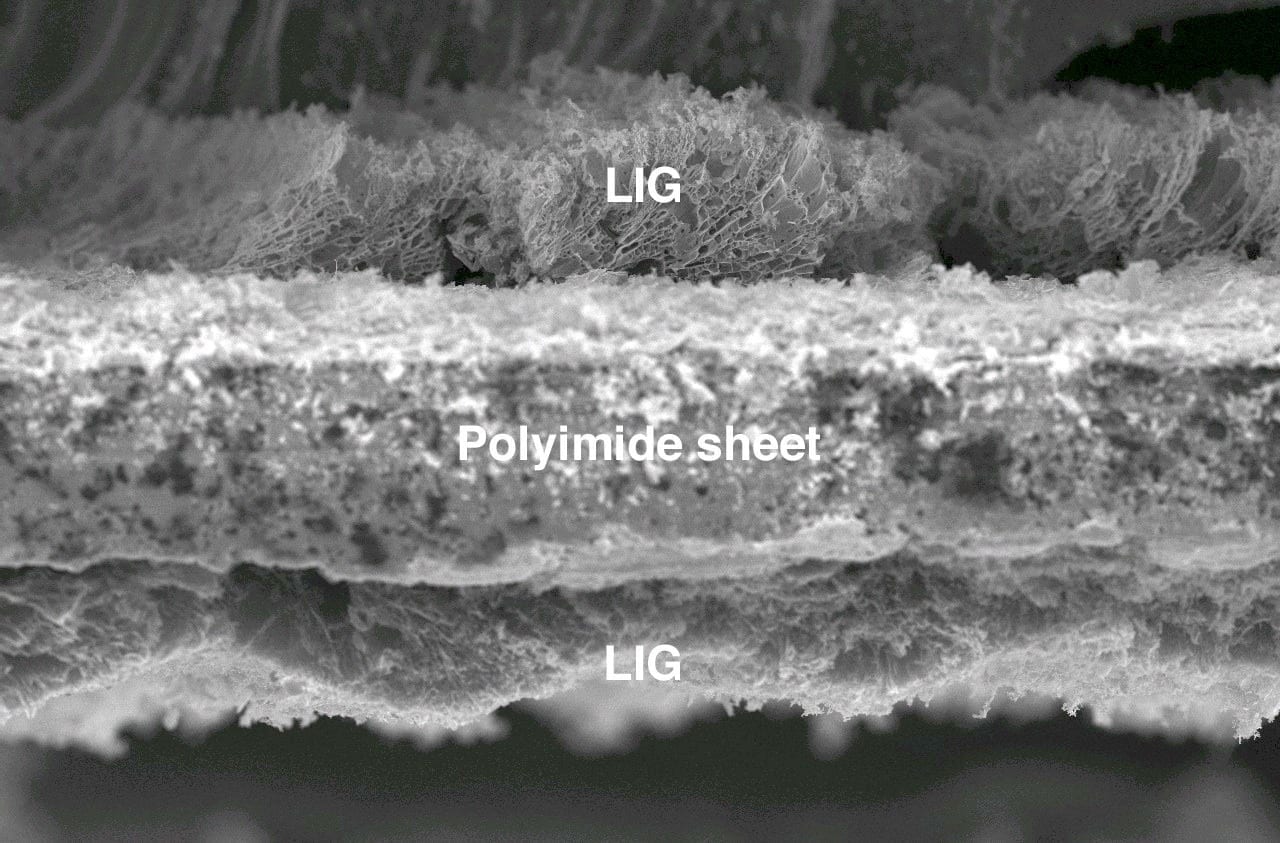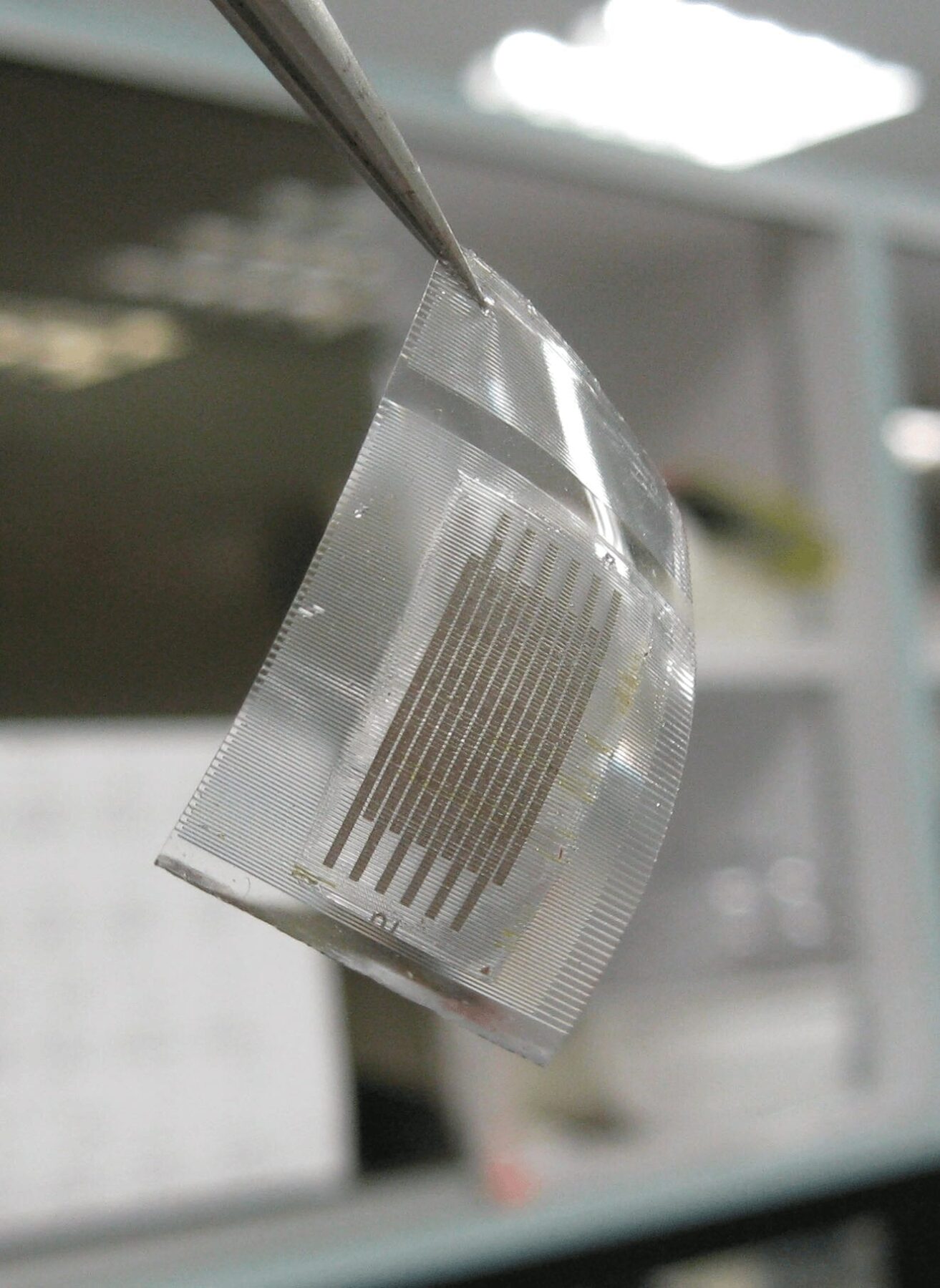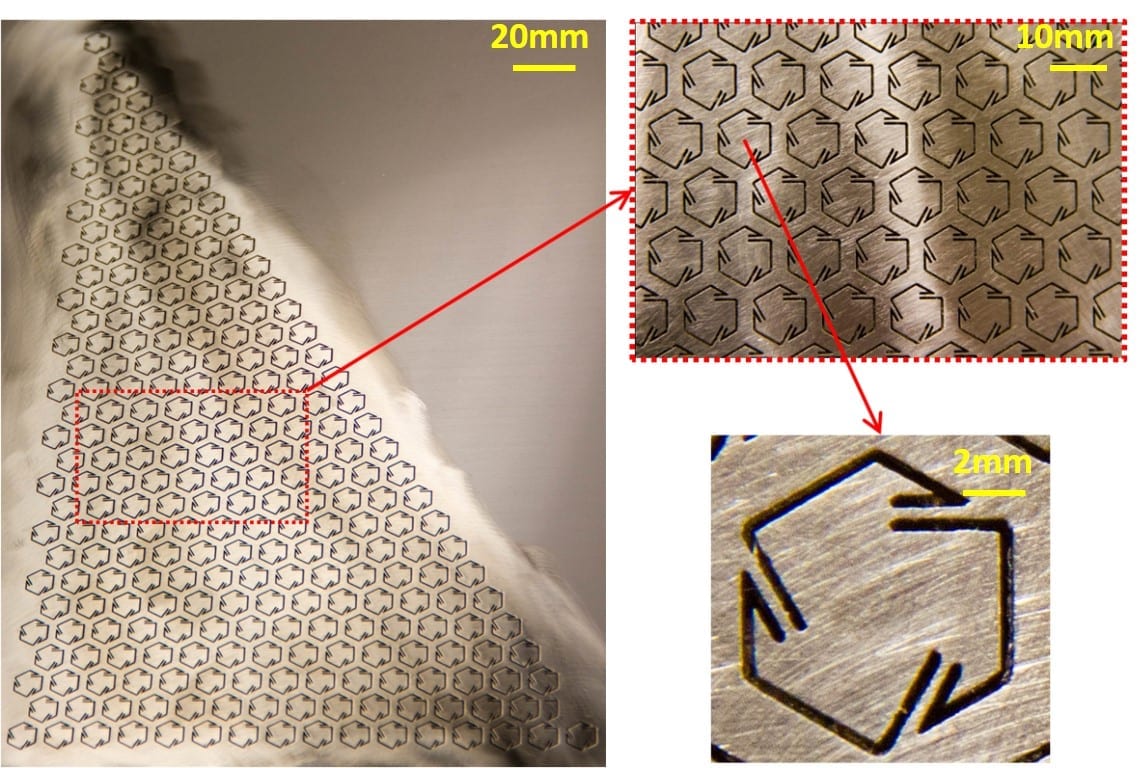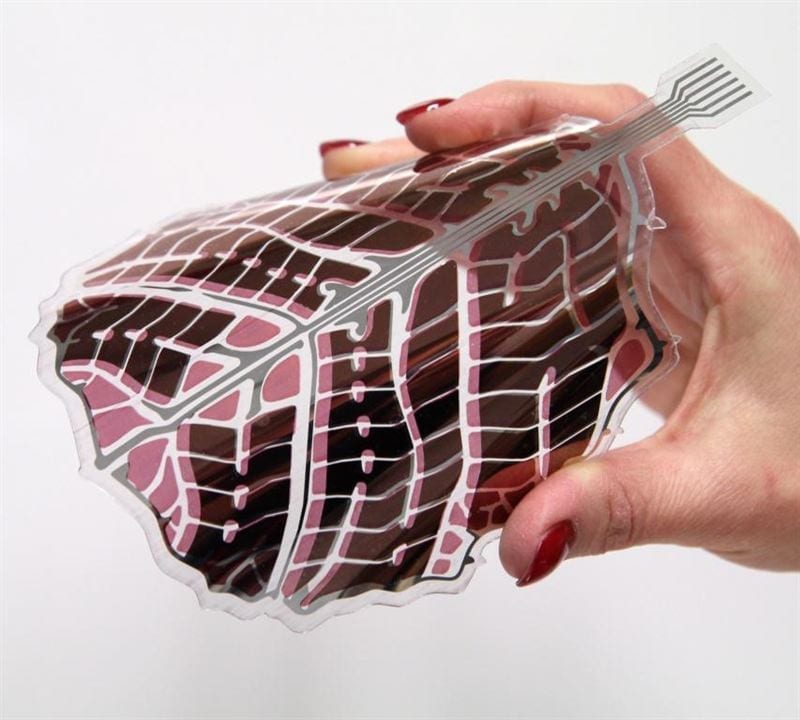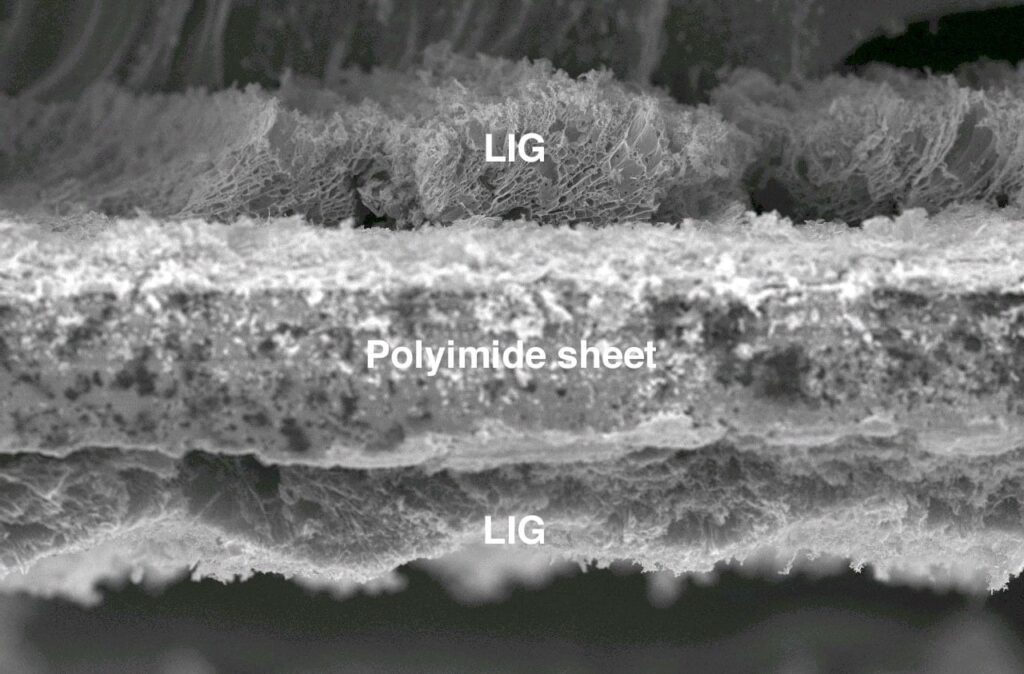
Rice University researchers test flexible, three-dimensional supercapacitors
Rice University scientists advanced their recent development of laser-induced graphene (LIG) by producing and testing stacked, three-dimensional supercapacitors, energy-storage devices that are important for portable, flexible electronics.
The Rice lab of chemist James Tour discovered last year that firing a laser at an inexpensive polymer burned off other elements and left a film of porous graphene, the much-studied atom-thick lattice of carbon. The researchers viewed the porous, conductive material as a perfect electrode for supercapacitors or electronic circuits.
To prove it, members of the Tour group have since extended their work to make vertically aligned supercapacitors with laser-induced graphene on both sides of a polymer sheet. The sections are then stacked with solid electrolytes in between for a multilayer sandwich with multiple microsupercapacitors.
The flexible stacks show excellent energy-storage capacity and power potential and can be scaled up for commercial applications. LIG can be made in air at ambient temperature, perhaps in industrial quantities through roll-to-roll processes, Tour said.
The research was reported this week in Applied Materials and Interfaces.
Capacitors use an electrostatic charge to store energy they can release quickly, to a camera’s flash, for example. Unlike chemical-based rechargeable batteries, capacitors charge fast and release all their energy at once when triggered. But chemical batteries hold far more energy. Supercapacitors combine useful qualities of both – the fast charge/discharge of capacitors and high-energy capacity of batteries – into one package.
LIG supercapacitors appear able to do all that with the added benefits of flexibility and scalability. The flexibility ensures they can easily conform to varied packages – they can be rolled within a cylinder, for instance – without giving up any of the device’s performance.
“What we’ve made are comparable to microsupercapacitors being commercialized now, but our ability to put devices into a 3-D configuration allows us to pack a lot of them into a very small area,” Tour said. “We simply stack them up.
“The other key is that we’re doing this very simply. Nothing about the process requires a clean room. It’s done on a commercial laser system, as found in routine machine shops, in the open air.”
Read more here: Laser-induced graphene ‘super’ for electronics
The Latest on: Supercapacitors
[google_news title=”” keyword=”Supercapacitors” num_posts=”10″ blurb_length=”0″ show_thumb=”left”]
via Google News
The Latest on: Supercapacitors
- Stargate Hydrogen raises €42M seedon May 2, 2024 at 5:00 pm
In tandem with this financing achievement, Stargate Hydrogen is thrilled to announce the appointment of Mr. Taavi Madiberk, the Founder and CEO of Skeleton Technologies, the world’s leading ...
- Energy storage solutions key to green, reliable electricityon May 1, 2024 at 5:00 pm
Investigating different types of solutions, Mr. Miller “came across supercapacitors, which are the size of a large coffee cup and can charge and discharge very quickly. They also last a long time: you ...
- HydroGraph to Supply Pristine Graphene to Volfpack Energy for Solar Power Battery Storageon April 30, 2024 at 6:31 am
Its flagship product, fractal graphene, FGA-1, was chosen by Volfpack to be the base material of the supercapacitor design after Volfpack’s engineers determined that it outperformed materials ...
- Scientists design super-battery made with cheap, readily affordable chemical element, Na — Salt-based cell has surprisingly good energy density and charges in secondson April 29, 2024 at 9:50 pm
Researchers at the Korea Advanced Institute of Science and Technology (KAIST) have developed a high-performance, hybrid sodium-ion battery that charges rapidly and offers impressive energy ...
- Scientists Uncover Surprising Efficiency of “Messy” Supercapacitorson April 26, 2024 at 10:41 pm
The energy density of supercapacitors, devices similar to batteries that can recharge rapidly in just seconds or minutes, can be improved by increasing the ‘messiness’ of their internal structure. Res ...
- MXenes to revolutionize energy storage; may help devices charge in secondson April 23, 2024 at 9:56 am
A team at Texas A&M University is focusing on MXenes, which is expected to be a compelling alternative to conventional lithium-ion batteries.
- This electrode material allows 33x more energy storage in wearableson April 21, 2024 at 5:25 am
Fiber-like electrodes with exceptional strength, lightness, and flexibility, promises improved energy storage in wearable devices.
- Researchers develop sodium battery capable of rapid charging in just a few secondson April 19, 2024 at 10:02 am
Sodium (Na), which is over 500 times more abundant than lithium (Li), has recently garnered significant attention for its potential in sodium-ion battery technologies. However, existing sodium-ion ...
- Acids enable adhesive electrodes for thin, flexible supercapacitorson March 31, 2024 at 5:00 pm
They published their findings on Mar. 29, 2024 in Polyoxometalates. "Flexible 2D supercapacitors typically suffer from complicated and time-consuming fabrication procedures and poor mechanical ...
- SuperCapacitors Vs Batteries Againon December 2, 2021 at 4:16 am
Supercapacitors are definitely not the same as batteries, we all know that. They tend to have a very low operating voltage, and due to their operating principle of storing charge on parallel ...
via Bing News







